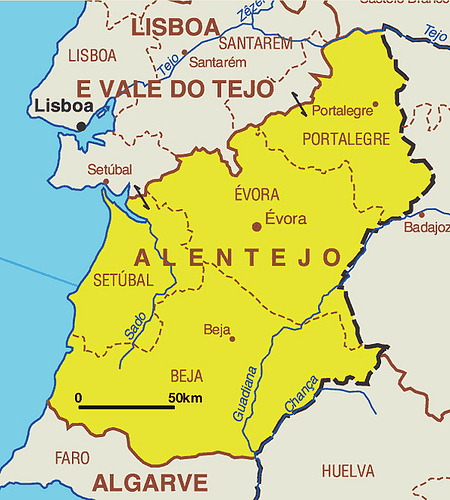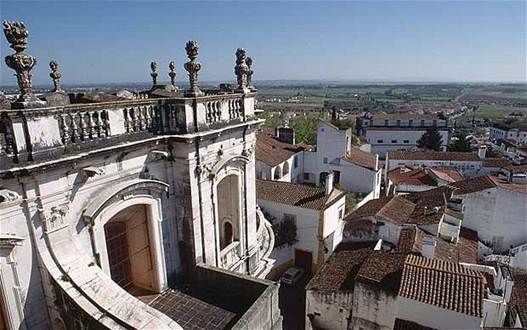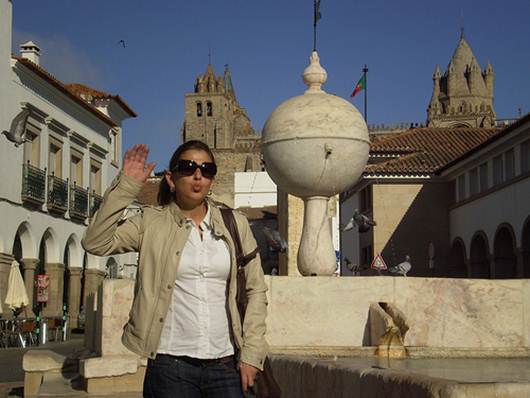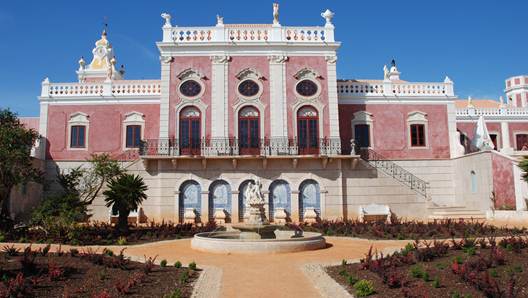An elegant and unspoilt walled town in the
heart of the Alentejo wine country, Evora is an ideal destination for lovers of
culture and cuisine, says Paul Richardson.
The motorway powers out of Lisbon, heading
east towards the Spanish border, through countryside as unpopulated and as
little messed about with as any in Europe. The thinner the traffic and the
emptier the landscape, the greater the sense of relief that seeps into one’s
stress-tightened muscles.
Map of Alentejo So the Alentejo, located in southern
Welcome to the Alentejo, a region that
occupies more than a third of Portugal’s surface area, despite being home to
just seven per cent of the population.
The “land beyond the Tagus” is calming in
its uncluttered, minimalist beauty. Pastureland and wheat fields alternate with
vineyards, olive groves and sparse forests of cork oak. The region is the
world’s most important cork producer, and the acorns that fall from the oaks go
to feed black-footed porco preto pigs for presunto ham. Occasionally a small
white town appears, clustered on a hill, or a low-rise, high-chimneyed
farmhouse, its whitewashed walls picked out with ochre or bright-blue trim.

The
rooftops of Evora in the Portugal's Alentejo region
Slatherings of history overlay this
landscape and these pretty towns. More than 150 menhirs, dolmens and cromlechs
are dotted aroung the northern Alentejo, making this a rich seam of Neolithic
culture. Even for non-antiquarians, the stone circle at Almendres, outsides
Evora, is atmospheric in its sylvan setting. During the first century BC, the
Romans established a seat of power in the region and called their settlement
Ebora Liberalitas Julia. The city continued to enjoy a measure of importance
until the 18th century, when it began to sink into provincial
obscurity. But if its monuments and its streets of historic houses fell into
desuetude, most of them were eventually restored, and Evora fully deserves the
UNESCO World Heritage status conferred upon it in 1986.
Capital of the upper Alentejo (as Beja,
64km to the south, is of the lower), Evora has nothing of the fast, modern city
about it, and quite a lot of the slow-moving, sleepy country town. The historic
centre is encircled by a ring of medieval walls which creates something like a
nature reserve for buildings, embracing and protecting everything of value
within. Nothing is allowed to spoil Evora’s cityscape of whitewash and ochre
and granite. After several days of dedicated exploration, I still found it hard
to believe that real people were able to lead real lives amid all this
loveliness, to do the weekly shop, get to work on time and remember to pay the
gas bill.

Evora
is sometimes called a cidade-museu (“museum city”)
Evora is sometimes called a cidade-museu
(“museum city”), and it does have something of the imperviousness to change,
the all-pervading weight if its own history, that this epithet implies. Yet
it’s also a university town – students make up 10,000 of its 50,000-odd
inhabitants – and perhaps this injection of youthful energy explains the city’s
growing, if still marginal, interest in modern design. Funky little bars and
boutiques are popping up among the countless pastry shops, the old-fashioned
hardware stores and the clothes shops selling flesh-coloured lingerie for the
large lady. I was intrigued to discover an exhibition of “readymades” and other
artworks by the sculptor Marcel Duchamp – a show you’d be surprised to find in
a much more sophisticated city – at the avant-garde Fórum Eugénio de Almeida exhibition
space near the cathedral.

The
Palácio also incorporates ones of Portugal’s most beautiful churches
Evora is one of those places where you can
either easily see enough in a weekend, or you can spend weeks finding curious
things in every nook and cranny: secret gardens with lemon trees that spill
their fruit over high walls; granite windows with the flounces and furbelows of
the fantastical Manueline Gothic style, unique to Portugal; shady alleys where
the only sounds you’ll hear are cooing pigeons; and sprawling aristocratic
palaces which, to your surprise, turn out to be open to the public. One morning
I spend a pleasant hour in the company of Prince Charles-Phillippe d’Orleans, a
scion of the French royal family (I treasure his visiting card), who take time
to show me around a house that has been in the family of his Portuguese wife,
the Dusches de Cadaval, since the 15th century. The Palácio Cadaval
is a miscellany of ecclesiastical art, Portuguese antiques, and touching
evidence of domestic life (in the palace kitchens, a wood fire crackled in the
grate). The Palácio also incorporates ones of Portugal’s most beautiful
churches, and, in a country where one can become blasé about blue-painted
azulejos, its sumptuous 18th-century tiles – 600 square metres of
them – successfully revived my flagging enthusiasm for the genre.